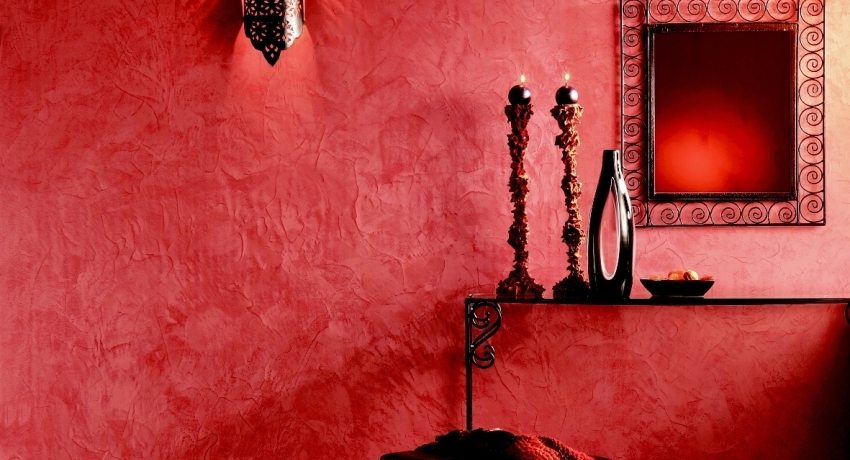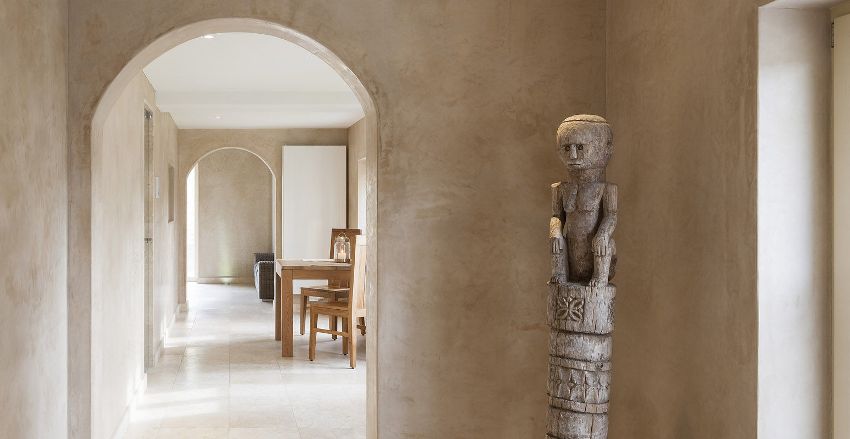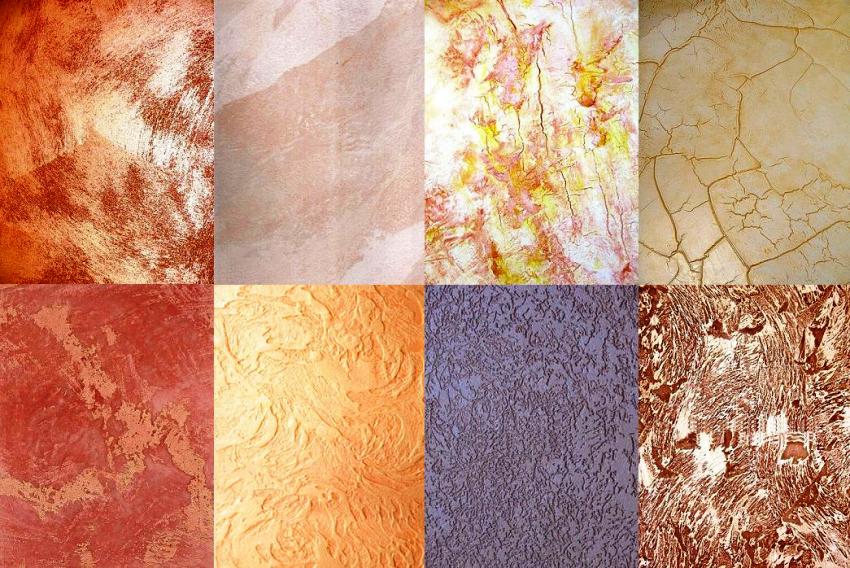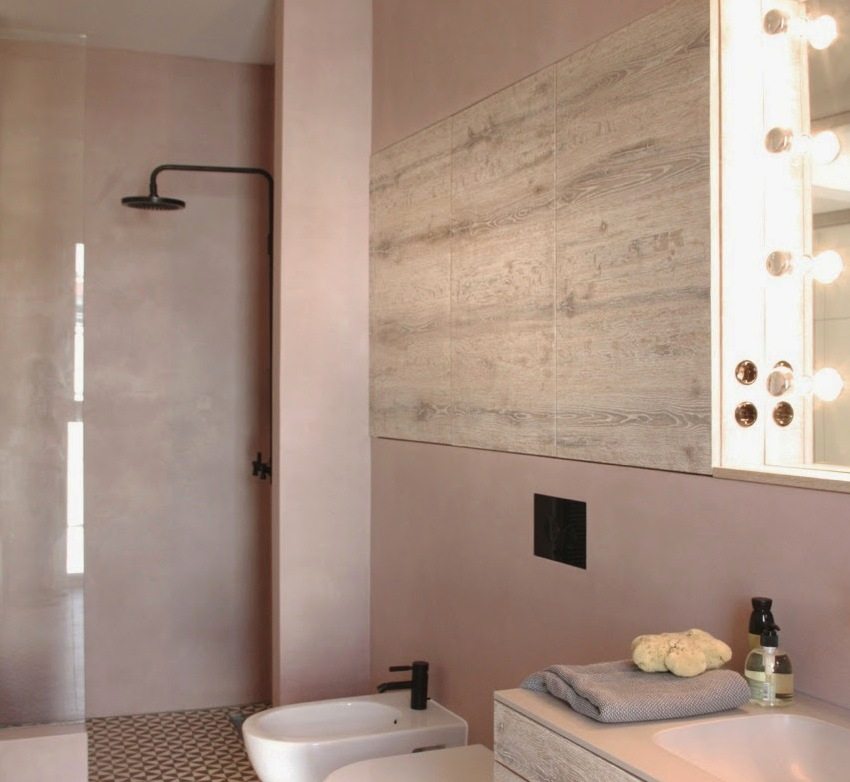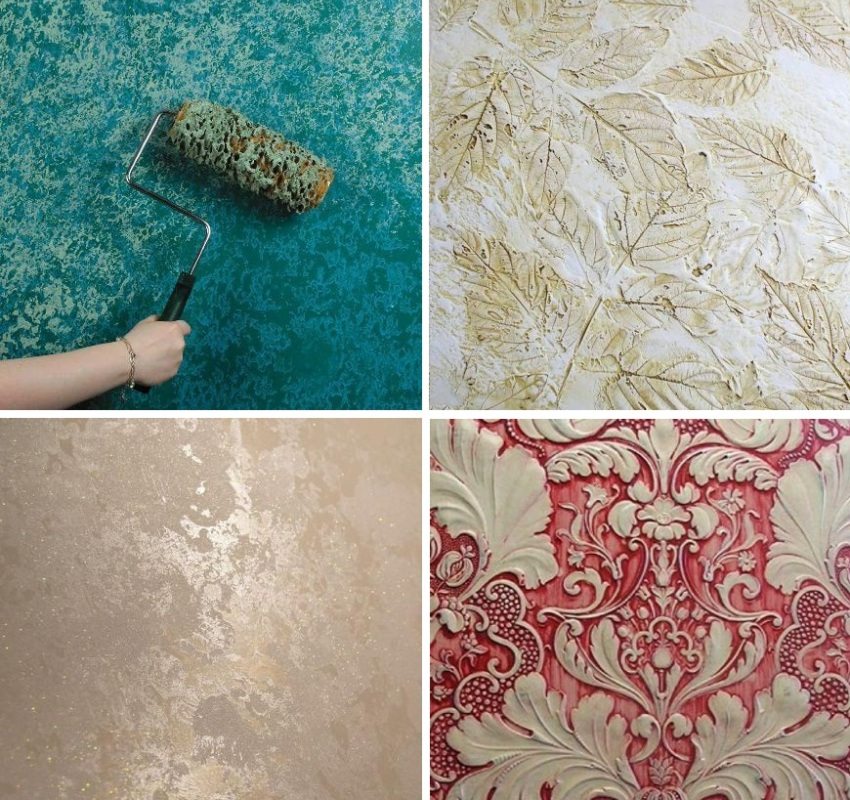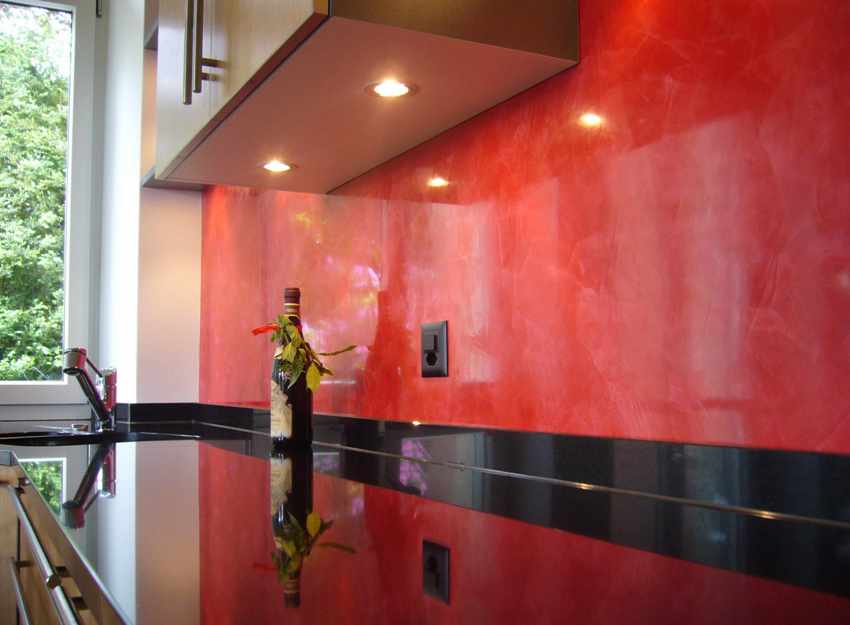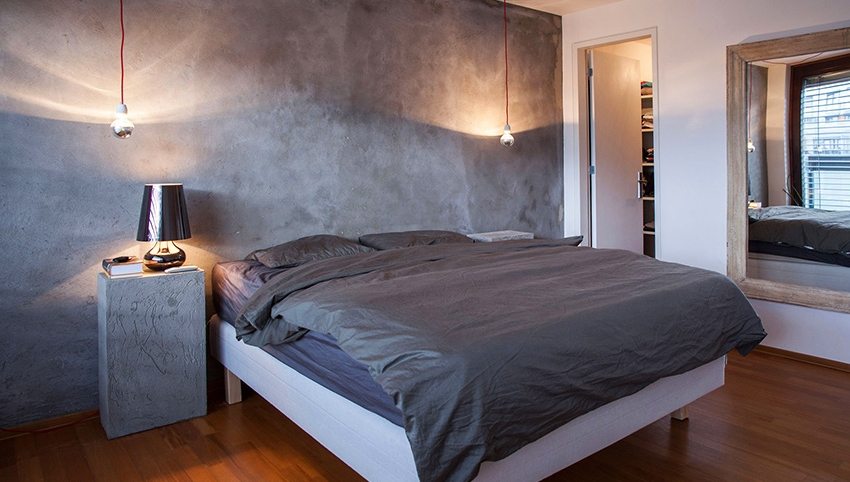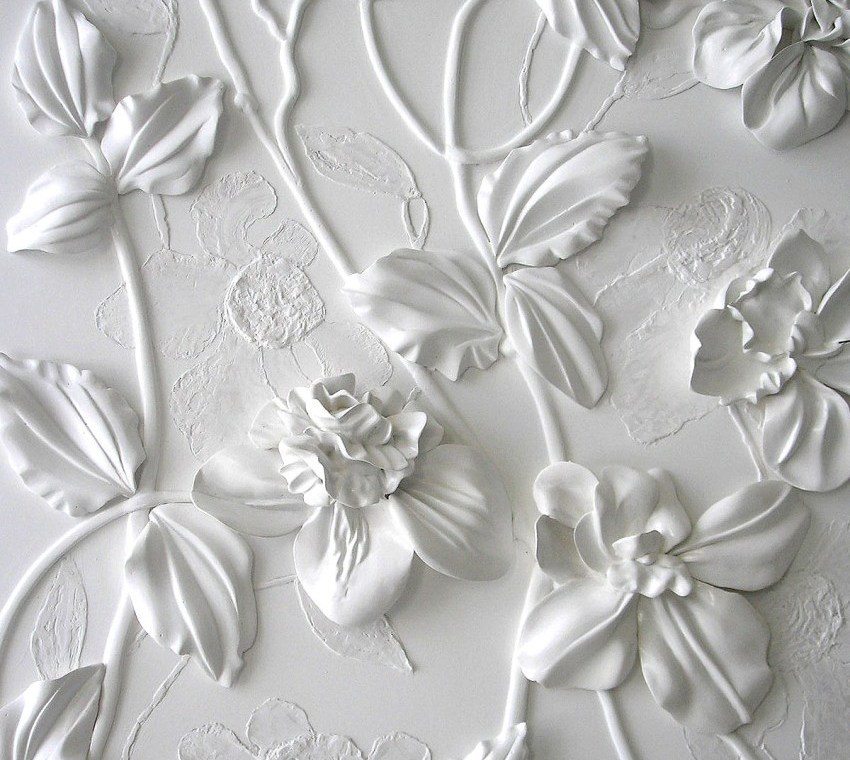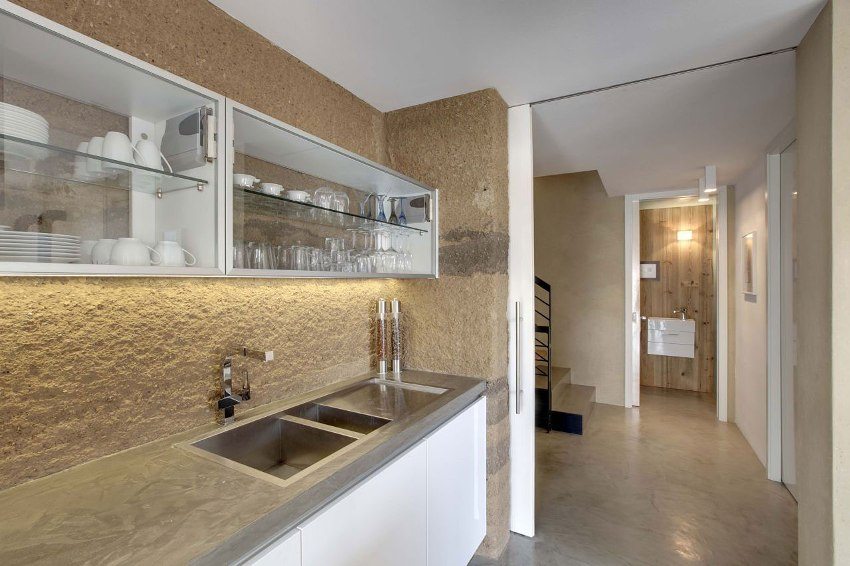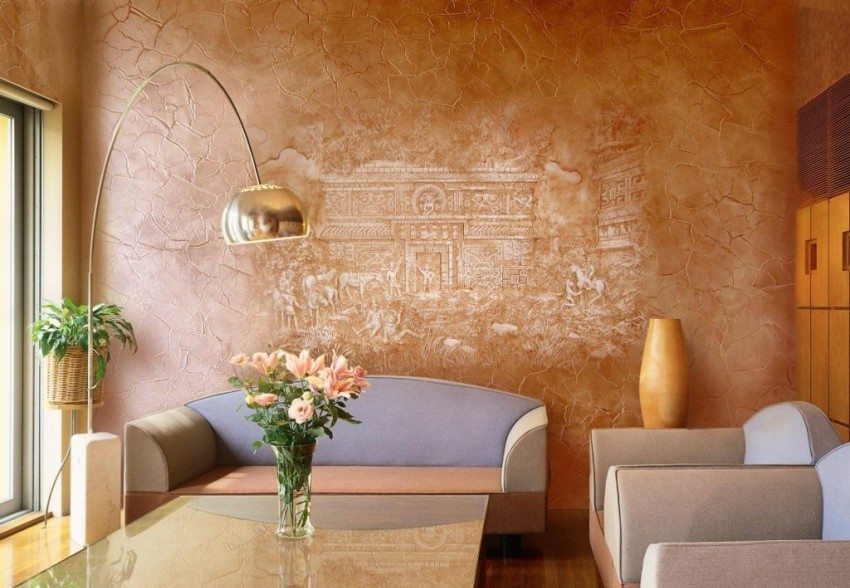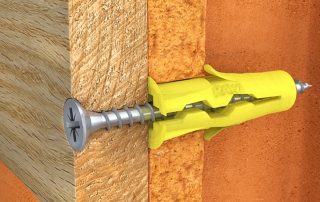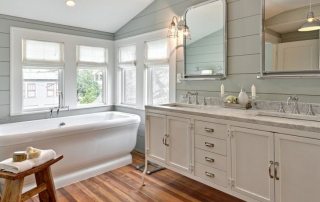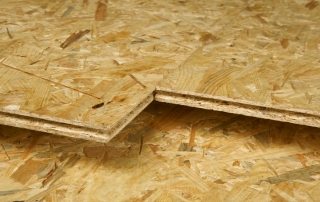Quite often, when decorating walls, decorative plaster is used, the photo in the interior of which amazes with the depth of texture and sophistication of the pattern. The volume it creates transforms walls from flat two-dimensional surfaces into beautiful three-dimensional structures filled with countless relief elements. Today, a significant number of types of decorative plaster mixes are produced. Therefore, choosing the right option is not difficult. They give the best effect when creating Provence and Chateau styles.
Content
Variety of decorative plastering compounds
Today on sale you can find a very large assortment of varieties of decorative plaster. Photos in the interior of some of them resemble works of art. The images created by using them are so elegant and unique. Compositions are produced from various components, both natural and artificial. In addition, there are mixtures with the presence of both.
If we take, for example, Venetian decorative plaster, the photo in the interior of which is most often found, then it is made of slaked lime with admixtures of stone dust. For plasticity, it also contains beeswax. Other compounds are often made from acrylic with cement, and latex is used for plasticity. The listed components form the basis of the material. Particles of various sizes are added to it to give relief. Their coarse fractions create volume and texture, while small fractions make the surface rough.
All sold mixtures have a white neutral color, which allows, using colors, to give any desired shade to the finished composition. The vast majority of plaster types are diluted with water. However, there are those that require a special liquid to dilute.
It is customary to divide all decorative plaster into "thick" and "thin" coatings. The photo in the interior of the first type is distinguished by the depth of texture and large volume. The thickness of such a layer can be more than 2 mm, and in some cases reach 1 cm. The second type does not differ in large volume and is applied in a thin layer up to 2 mm. It requires very careful preparation of the walls, unlike the first type.
Where decorative plaster is used, photo in the interior in various situations
The choice of the type of plaster mixture depends on the type of work surface and where it is located.It is also important what will affect it and with what intensity. Hence, three types of mixtures can be distinguished according to the scope of use:
- decorative plaster for interior work, the photo of which can only be found with the image of the interior space of buildings, is environmentally friendly, since only natural substances are used in it. Such mixtures cannot be used outside. Precipitation and wind-blown sunlight will quickly render the coating unusable. It is not resistant to external aggressive environments, as it is intended only for internal use;
- mixtures for finishing the facade of buildings have good resistance to any external climatic influences. They are not afraid of rain, snow, wind, temperature changes and even hail. It is very durable, but this property is provided to it by harmful components, because of which it cannot be used inside residential premises;
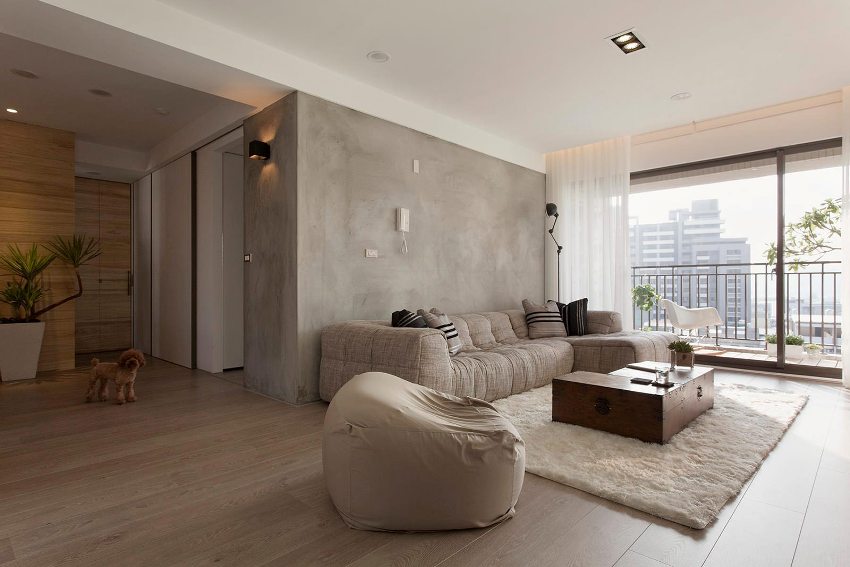
One of the walls in the living room has decorative plaster
- there is also a universal type that can be applied both inside and outside the building. Its strengthening components of the composition do not pose a danger to humans. Decorating the walls with decorative plaster, a photo of which can be found both inside the building and on its facade, will cost much more;
Helpful advice! When deciding to buy a decorative plaster mix, be sure to read its description on the package. If necessary, ask the seller for help. You need to make sure that the selected type is suitable for your surface.
Is it easy to apply decorative plaster mixes
There are such types of decorative plaster, which anyone can apply with their own hands. It is realized in the form of a ready-made mixture and is applied with a spatula to the walls. Both the relief of the resulting surface and the pattern on the walls depend on this tool. Original spatulas allow you to create unique patterns.
Mixes such as Venetian plaster and so-called flock plaster are very difficult to apply. We need certain skills that are developed for a long time. Therefore, if you decide to use these types of decorative plaster for interior work, you need to show the photo of the desired result to the master and hire him to do the work. This will protect you from damage to materials as a result of your inept actions. The specialist studied for a long time how to properly hold a spatula in his hand and how deep to make a groove. Every good master has his own unique style.
The Venetian can be styled in different ways. She can imitate stone, wood, ancient frescoes and other structures. Today, factories produce mixtures suitable for various types of imitation.
The pinnacle of advances in this area is structural decorative plaster for interior use. A photo of finished compositions from such mixtures shows how easy it is to create antique or suede effects. In order to form these effects on the walls, it does not require particularly high qualifications, since in the very structure of the plaster lies the possibility of their creation without effort. The cost of these types of coverage is slightly higher than the others.
They contain quartz sand and acrylic, lime and special fibers. Additional substances are added to the mixture, which give a decorative effect: mother of pearl, gold and silver powder. Sometimes granules are present that are not affected by the dye. The mixture is applied to the walls with a spatula, and after drying, they begin to rub. In this case, the destruction of the granules occurs. The resulting surface has a scuffed appearance, creating an antiqued effect.
Application of decorative plaster mixes - process of varying degrees of complexity. It depends on the material itself and the customer's requirements for the depth of the texture and pattern. Therefore, in one case, the work can be done independently, and in the other, the help of a professional finisher is required.
Helpful advice! When choosing decorative plaster, you need to decide on its texture. This determines what degree of skill is required to apply it. If you plan to make repairs strictly on your own, then avoid complex textures.
What kind of wall decoration with decorative plaster can have: photo options
When considering photographs of options for finishing a room with decorative plaster mixtures, one can equally find smooth and embossed wall surfaces. Usually the wall looks like it is covered with stone chips, but there are also works that resemble leather covering, stone or even textile cloth. At the same time, it must be remembered that the thicker the coating, the more mixture it leaves.
Due to the ease of application, textured or structural plaster is especially popular today. It is sold completely ready to use. Applied to the wall with a spatula, it forms a predetermined pattern when it dries. The Venetian mixture is applied in interiors where classicism prevails. After all, its texture resembles an expensive stone. The wax coating applied to it on top creates a unique shine, complementing the similarity with natural natural stone.
Young flock flooring is now gaining popularity in the circles of designers and builders. It is very difficult to create a surface from it. However, the result is beyond expectations. To apply such a coating, it is necessary to grease the wall with glue, on which colored flakes are sprayed. Then they are already lubricated from above with varnish to give strength and durability. The resulting surface looks very peculiar.
Helpful advice! Putting putty on the walls is a mandatory step in applying decorative plaster. Only she can guarantee normal adhesion of the composition to the surface.
Today, any type of wall decoration with decorative plaster is available. A photo of the most interesting samples will help you make the right choice. Whatever it is, this type of coverage will never disappoint you, as it can surprise anyone.
Decorative plaster (video)
